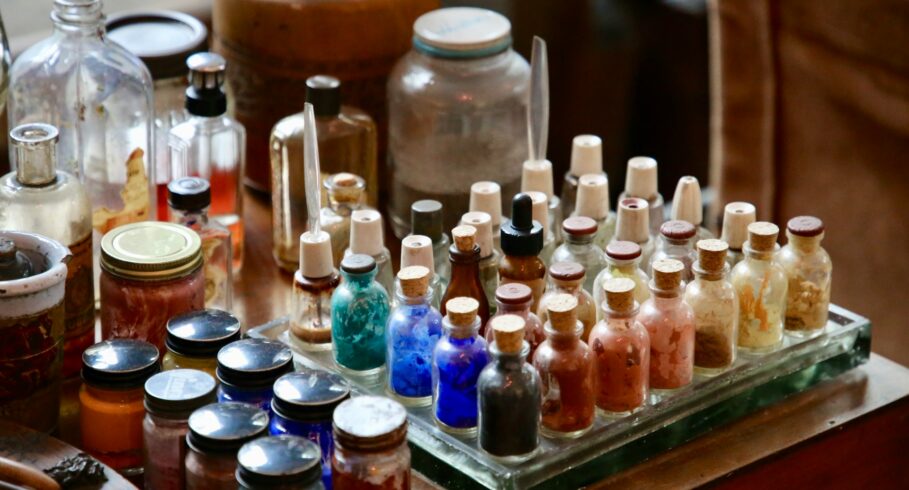
What pH should the cosmetic have?
What is pH and what does pH mean - importance in cosmetics.
What is pH? - is a question that often arises in the context of care. The pH scale indicates the degree of acidity or alkalinity of a solution and ranges from 0 to 14. Values below 7 are acidic pH, a value of 7 indicates neutral pH and above 7 we are dealing with alkaline pH. What does pH mean in practice? It is not just a number, but has a real impact on the stability of the formulation, the effectiveness of the active ingredients and the comfort of the skin after application. An acidic pH promotes the preservation of the natural hydrolipid barrier, while an overly alkaline pH can lead to dryness and irritation. This is why the pH value of 5.5, which is considered friendly to human skin, is so often mentioned. However, it is important to remember that not every cosmetic has to have exactly this value - it is important to adapt the pH to the function of the product and its place of application.
The final pH of the cosmetic should be tailored to the target group. It is worth remembering that the pH is affected by many factors, including the presence of preservatives, surfactants and storage conditions. The pH of the skin and the pH of the cosmetic must be considered together in order to achieve a skincare effect as expected. If you need professional support, cosmetics laboratory will help to check the parameters of the recipe and ensure full control over its stability.
What is the pH of the skin and why is it so important?
The natural pH of the skin is between 4.5 and 5.9 and therefore healthy skin is said to be slightly acidic. A pH of 5.5 is most commonly used as a reference point, which supports the microbiome and the integrity of the hydrolipidic mantle. Skin pH varies from place to place - facial skin pH tends to be slightly lower to help protect against microbes, while scalp pH is further influenced by sebum secretion and frequency of washing. Overly alkaline cleansers can raise the pH of the skin and cause a pulling sensation and, in the case of hair, the opening of scales and loss of smoothness.
How do you check the pH of your skin? The easiest way is with indicator strips, although devices with special electrodes used in laboratories and practices are more accurate. The results of such measurements allow better selection of cosmetics and avoid discomfort after application. The pH of the scalp and the pH of the facial skin are particularly important, as even slight deviations can cause dryness, irritation or dandruff. Therefore, when creating formulations, it makes sense to take these differences into account and design products in the range where the skin feels best. Professional cosmetics research include the measurement of pH and its stability over time, which guarantees the safety and efficacy of the product.
What pH should a cosmetic have for different applications?
The pH of a cosmetic should always be matched to its intended use. Preparations that remain on the skin, such as creams or serums, should have a pH close to the physiological one, i.e. around 4.5-5.5. This value supports the natural microflora and reduces the risk of irritation. Washing products that rinse off with water can have a slightly higher pH, but strongly alkaline values should still be avoided. The alkaline pH used in traditional bar soaps has a cleansing effect, but at the same time weakens the protective barrier and causes a dry feeling, so modern formulations seek to minimise this effect.
In the case of specialised cosmetics, such as acid-based peels or sera with vitamin C in the form of ascorbic acid, the pH is deliberately set to lower values to increase the effectiveness of the active ingredients. However, this requires appropriate buffers and stability control. What does pH mean in the technical data sheet? It is information about how the product will interact with the proteins, lipids and microbiome of the skin. When planning a product line, it is a good idea to take into account the so-called pH map - that is, the correct adjustment of the pH value of all cosmetics from cleansers to creams. This allows the skin to better maintain its natural balance and function efficiently. This process can be supported by registration of cosmetics and safety assessment of cosmeticswhich include, among other things, an analysis of the pH and its compatibility with the declared use.
From theory to practice - how to work consciously with pH?
Conscious management of pH in cosmetics is one of the most important tasks during formulation. The pH of the skin and the pH of the product must work together to avoid disruption of the hydrolipid barrier and adverse reactions. It is also worth remembering that active ingredients have their own ranges of effectiveness - exfoliating acids work in an acidic environment, ascorbic acid (vitamin C) requires a low pH, and preservatives have specific ranges of activity. Therefore, pH is not just a technical parameter, but a real determinant of product quality and safety.
Formulators should be attentive to how pH changes over time, its importance for the user's sensation and how it affects care effects. In practice, this means planning stability studies, using appropriate buffers and systematically checking each production batch. An acidic pH supports the health of the epidermal barrier, while an alkaline pH requires additional protection in the form of emollients or soothing substances. If you want to be sure that your formulations are designed in accordance with legal requirements and the real needs of your skin, it is worth relying on the professional support offered by the cosmetics laboratory. Contact mpr-labs.com and see how we can help match the pH of your cosmetics to your skin and formal requirements.